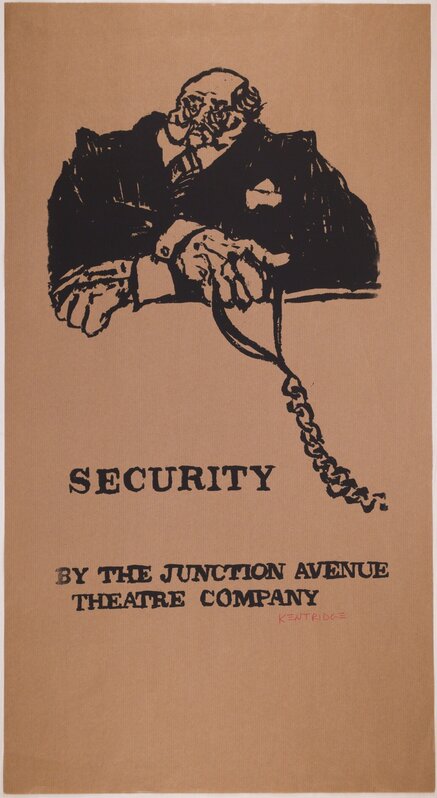
1. Security (1980)
- Artist: William Kentridge
- Date: 1980
- Medium: Screenprinted poster
- Dimensions: 22 9/16 x 14 3/8″ (57.3 x 36.5 cm); Sheet: 32 7/8 x 17 15/16″ (83.5 x 45.5 cm)
- Institutional Accreditation: Museum of Modern Art (MoMA)
- Description: “Security” is a screenprinted poster reflecting Kentridge’s early focus on memory and personal narrative through traditional drawing techniques. Published by the Junction Avenue Theatre Company in Johannesburg, the piece captures the socio-political climate of South Africa in the 1980s, showcasing Kentridge’s nascent commitment to social commentary through art.
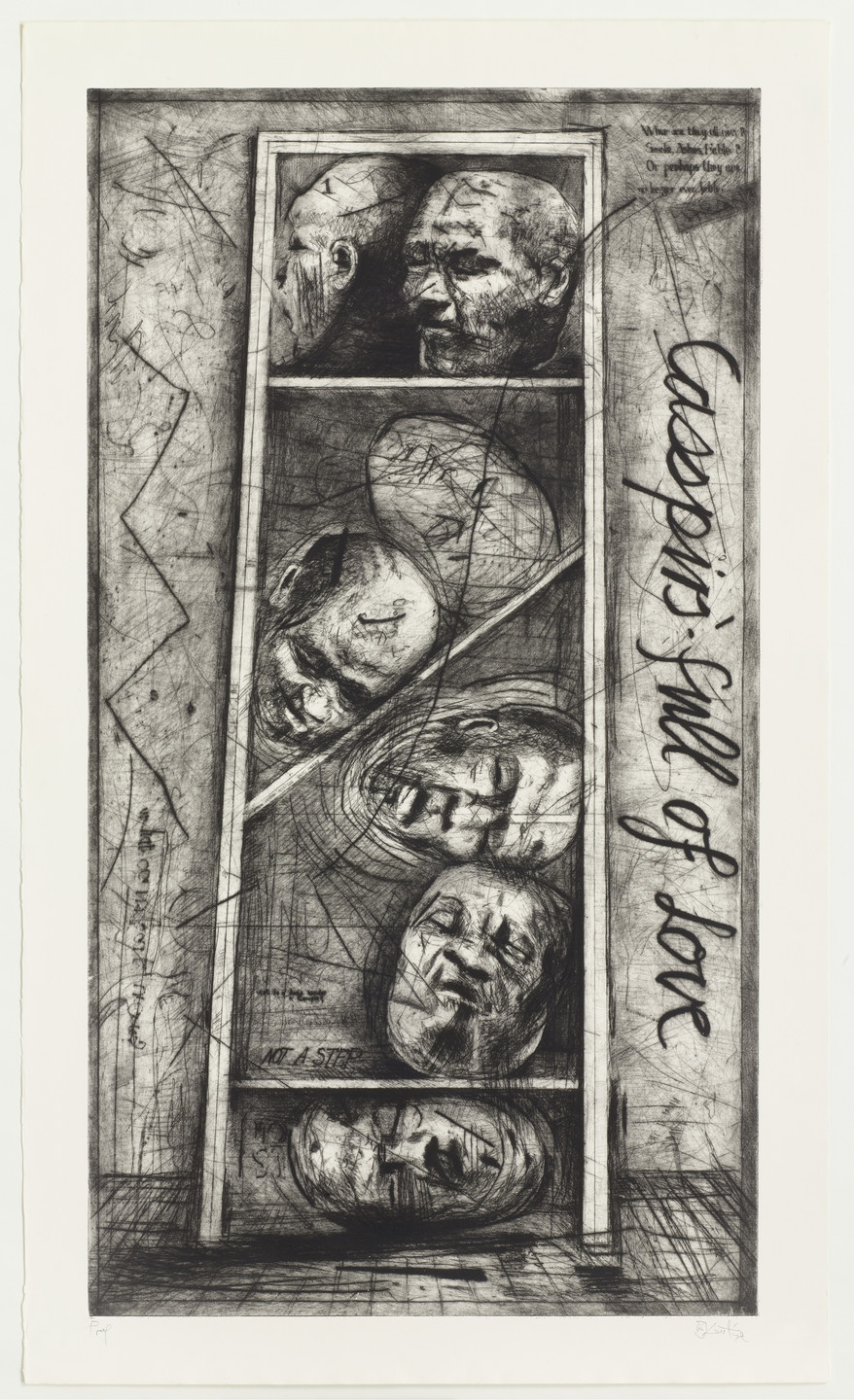
2. Casspirs Full of Love (1989)
- Artist: William Kentridge
- Date: 1989
- Medium: Print (printed in 2000)
- Dimensions: 65 1/2 × 38 3/8 in. (166.4 × 97.5 cm)
- Institutional Accreditation: The Metropolitan Museum of Art
- Description: “Casspirs Full of Love” reflects on the history and memory of apartheid, utilizing printmaking to convey a powerful message. The title refers to the armored vehicles used by South African police, while the imagery intertwines personal memory, historical events, and classical references, demonstrating Kentridge’s evolving ability to intertwine personal and political narratives.
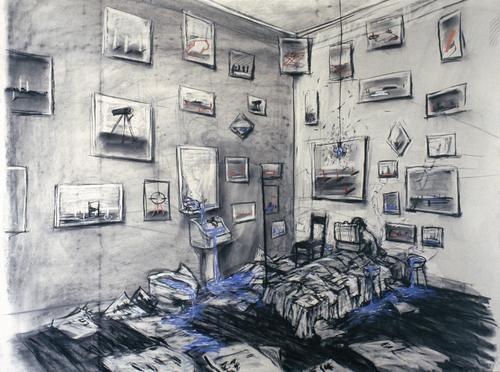
3. Felix in Exile (1994)
- Artist: William Kentridge
- Date: 1994
- Medium: 35mm film transferred to video (color, sound)
- Dimensions: 8:43 min
- Institutional Accreditation: MoMA
- Description: “Felix in Exile” marks a significant shift to multimedia and animation, providing commentary on displacement and identity. The film tells the intertwined stories of Felix, a man in exile, and Nandi, a land surveyor, capturing the complexities of reconciliation and rebuilding in post-apartheid South Africa.
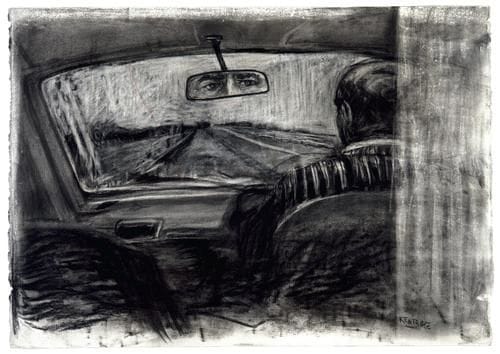
4. History of the Main Complaint (1996)
- Artist: William Kentridge
- Date: 1996
- Medium: 35mm film transferred to video (color, sound)
- Dimensions: 5:50 min
- Institutional Accreditation: MoMA
- Description: “History of the Main Complaint” continues Kentridge’s political discourse through animated storytelling, addressing the complexities of apartheid. This work, part of a series of hand-drawn animated films, offers a critical examination of South Africa’s socio-political landscape during the apartheid era.

5. Ubu Tells the Truth (1996–97)
- Artist: William Kentridge
- Date: 1996–97
- Medium: Portfolio of eight etchings
- Dimensions: Each etching: 9.8 x 11.8 in. (24.89 x 29.97 cm)
- Institutional Accreditation: National Museum of African Art
- Description: “Ubu Tells the Truth” is a suite of eight etchings depicting the notorious despot Ubu Roi, splitting the character to highlight the rift between public and private selves. This work delves into the absurdity of political narratives and the human condition, continuing Kentridge’s commentary on South African history.
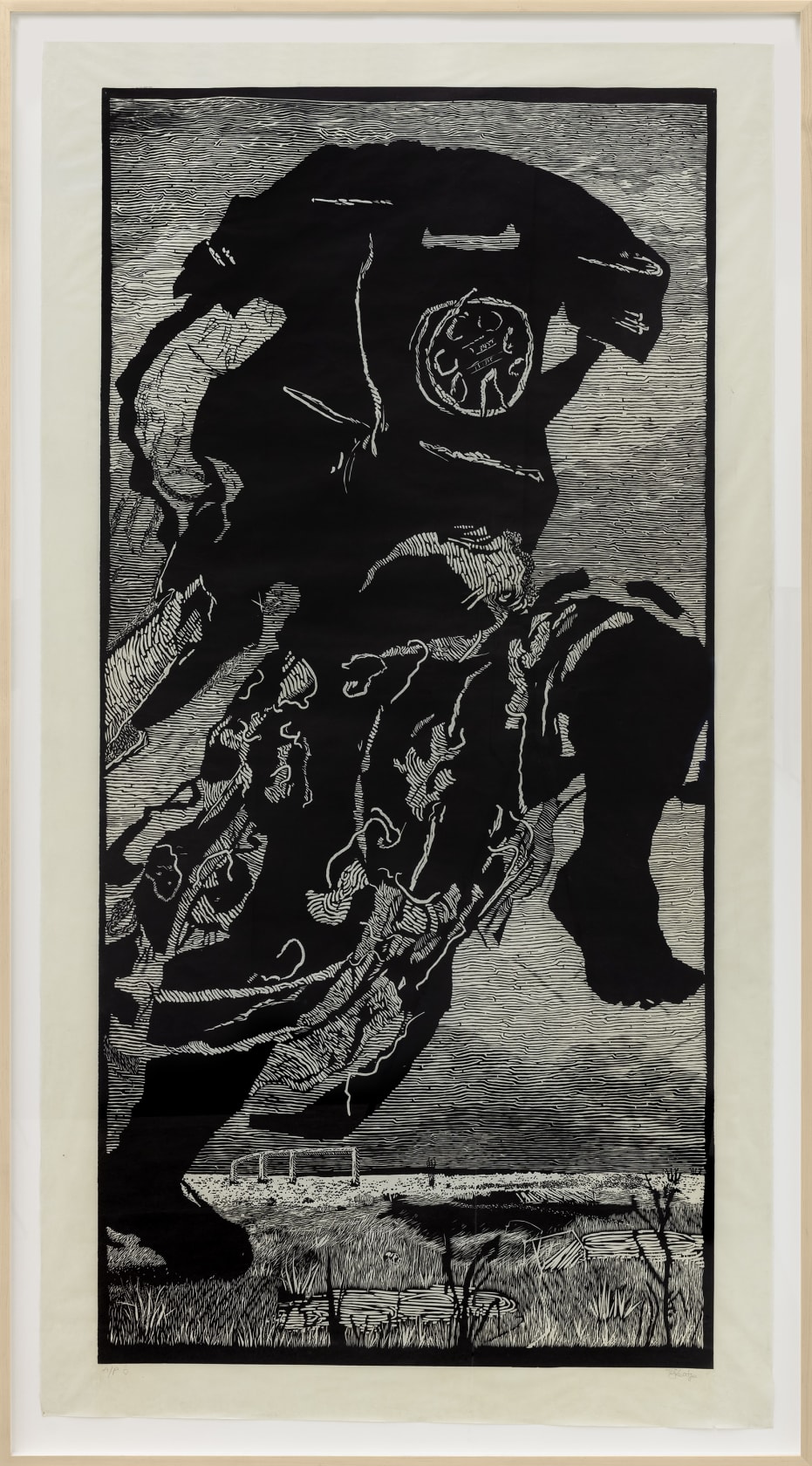
6. Telephone Lady (2000)
- Artist: William Kentridge
- Date: 2000
- Medium: Linoleum cut
- Dimensions: 81 3/8 x 39 7/16″ (206.7 x 100.2 cm); Sheet: 86 5/8 x 39 15/16″ (220 x 101.5 cm)
- Institutional Accreditation: MoMA
- Description: “Telephone Lady” represents Kentridge’s mature style, possibly involving large-scale installations or performance art. Created using a large linoleum panel, the work’s expressive black-and-white patterning reflects Kentridge’s continued exploration of contemporary socio-political themes through an interdisciplinary approach.
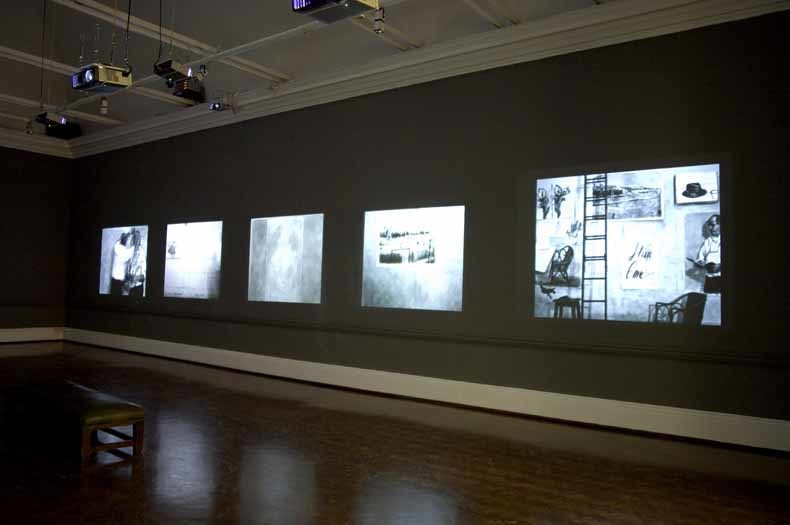

7. 7 Fragments for Georges Méliès (2003)
- Artist: William Kentridge
- Date: 2003
- Medium: Installation of seven film fragments
- Dimensions: Nine-channel film installation
- Institutional Accreditation: MoMA
- Description: “7 Fragments for Georges Méliès” showcases Kentridge’s interdisciplinary work, blending contemporary socio-political themes with homage to early cinema. The dreamlike self-portraits in this installation highlight Kentridge’s innovative approach to storytelling and his ability to adapt and evolve as an artist.
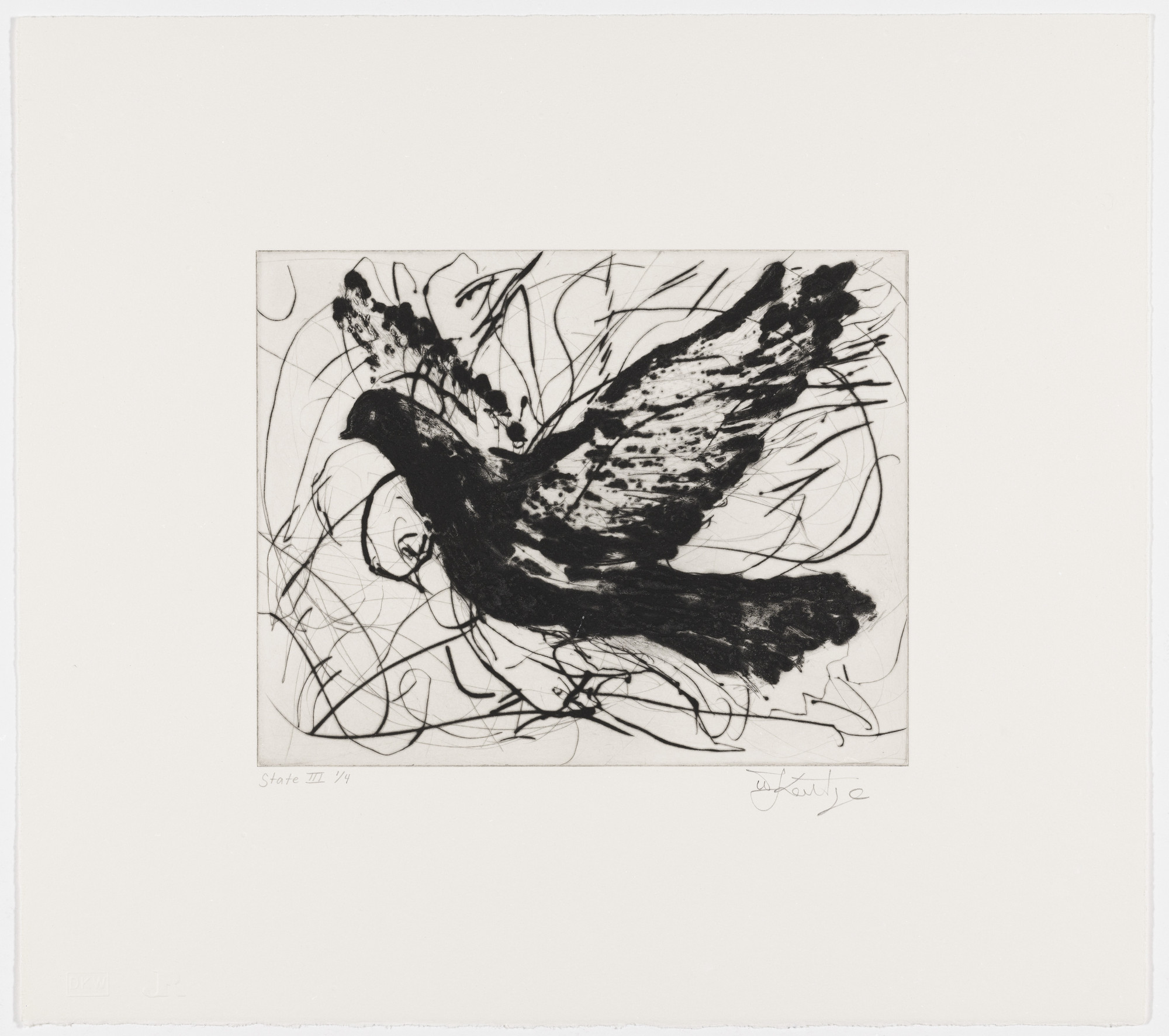
8. Magic Flute: Dove, state I-X (2006-07)
- Artist: William Kentridge
- Date: 2006-07
- Medium: Series of ten carborundum prints and drypoints
- Dimensions: Each etching: 7.1 x 9.4 in. (18 x 24 cm)
- Institutional Accreditation: MoMA
- Description: “Magic Flute: Dove, state I-X” is a series of ten carborundum prints and drypoints, reflecting Kentridge’s innovative blend of mediums and contemporary socio-political themes. This series, inspired by Mozart’s opera, illustrates Kentridge’s ongoing exploration of history, memory, and identity through an interdisciplinary approach.


